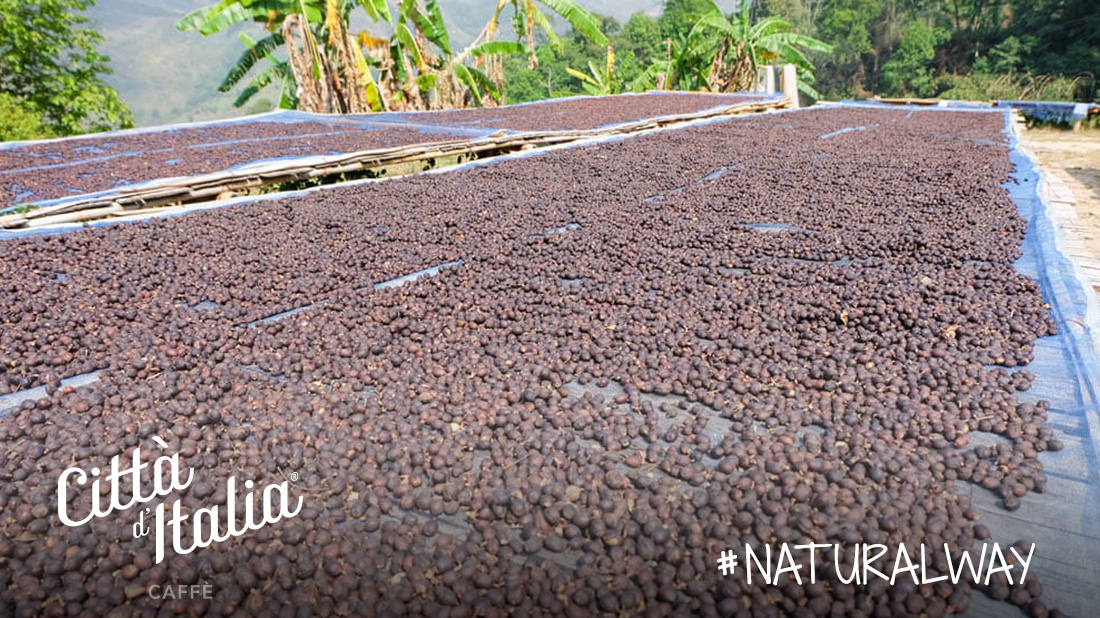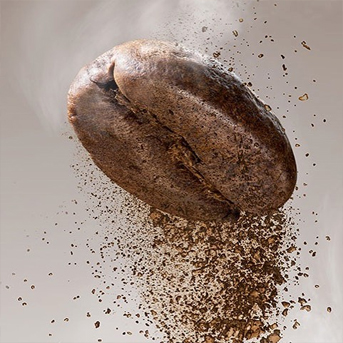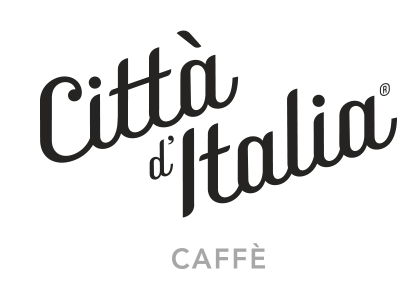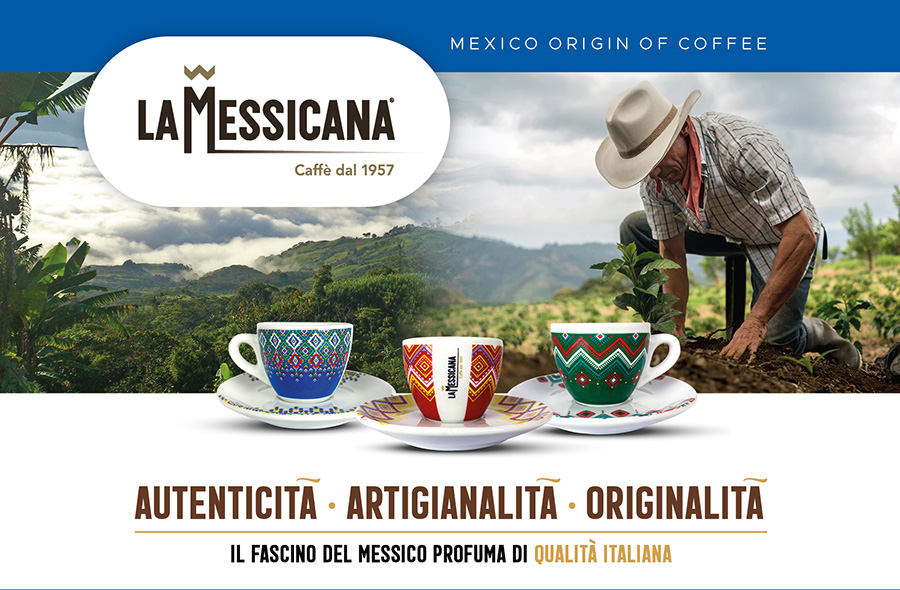COFFEE PROCESSING: THE NATURAL METHOD

Type, origin, production process but also processing method. There are many factors that determine the coffee taste like we savor it in cup.
Did you know, for example, that the coffee taste changes depending on how it is processed? Well yes. Coffee processing is one of the most important stages of the supply chain and can affect the quality of the finished product. Moreover, the method choice can vary the coffee sensory profile.
The natural method, also called dry method, is the oldest method of processing coffee and is particularly widespread in dry climate countries. It consists of exposing the drupes in the sun (i.e. the coffee fruits in which the beans are kept), on raised beds “African beds” or large farmyards, carefully selected at the right point of ripening.
The drupes in the sun are continuously turned and mixed to ensure a homogeneous drying and avoid unwanted fermentation. The drying stage is quite long, from 3 to 4 weeks.
Once the correct level of humidity is reached, the dried drupes are passed through machines that separate the grains from the other parts of the coffee fruit. At this point, the coffee beans are sifted in specific sieves which determine their classification by thickness.
Natural coffees have lower sourness and thicker body than washed coffees.










